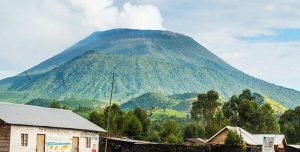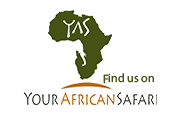Democratic Republic of Congo
The Democratic Republic of Congo (DRC) has immense natural beauty and a rich cultural heritage, which could make it a fascinating destination for tourists. However, due to political instability, conflict, and social unrest, the country is not considered a safe or stable tourist destination.
The DRC has a variety of natural wonders, including the Congo River, which is the second longest river in Africa and one of the deepest in the world. The country is also home to dense rainforests, volcanic mountains, and breathtaking waterfalls such as the famous Livingstone Falls.
The DRC is also home to diverse and vibrant cultural communities, with more than 200 ethnic groups speaking over 200 languages. Tourists can experience traditional dance, music, and art, and learn about the history and customs of the local people.
However, the country’s unstable political climate and ongoing conflicts between various groups make it difficult for tourists to visit and enjoy the beauty and culture of the DRC. The country also faces challenges such as poor infrastructure, lack of proper tourist facilities, and high crime rates.
History
Democratic Republic of Congo, country located in central Africa. Officially known as the Democratic Republic of the Congo, the country has a 25-mile (40-km) coastline on the Atlantic Ocean but is otherwise landlocked.
It is the second largest country on the continent; only Algeria is larger. The capital, Kinshasa, is located on the Congo River about 320 miles (515 km) from its mouth, its the largest city in central Africa & it serves as the country’s official administrative, economic, and cultural Centre.
The country is often referred to by its acronym, the DRC, or called Congo (Kinshasa), with the capital added parenthetically, to distinguish it from the other Congo republic, which is officially called the Republic of the Congo and is often referred to as Congo (Brazzaville).

Democratic Republic of Congo
Congo gained independence from Belgium in 1960. From 1971 to 1997 the country was officially the Republic of Zaire, a change made by the then ruler Gen. Mobutu Sese Seko to give the country what he thought was a more authentic African name. “Zaire” is a variation of a term meaning “great river” in local African languages; like the country’s current name, it refers to the Congo River, which drains a large basin that lies mostly in the republic.
Unlike Zaire, however, the name Congo has origins in the colonial period, when Europeans identified the river with the kingdom of the Kongo people, who live near its mouth.
Following the overthrow of Mobutu in 1997, the country’s name prior to 1971, the Democratic Republic of Congo, was reinstated.
Congo subsequently was plunged into a devastating civil war; the conflict officially ended in 2003, although fighting continued in the eastern part of the country.
Land Mass & Geography
Congo is bounded to the north by the Central African Republic and South Sudan; to the east by Uganda, Rwanda, Burundi, and Tanzania; to the southeast by Zambia; and to the southwest by Angola. To the west are the country’s short Atlantic coastline, the Angolan exclave of Cabinda, and Congo (Brazzaville).

physical features of the Democratic Republic of Congo
Major topographical features
The country’s major topographical features include a large river basin, a major valley, high plateaus, three mountain ranges, and a low coastal plain.
Most of the country is composed of the central Congo basin, a vast rolling plain with an average elevation of about 1,700 feet (520 metres) above sea level.
The lowest point of 1,109 feet (338 metres) occurs at Lake Mai-Ndombe (formerly Lake Leopold II), and the highest point of 2,296 feet (700 metres) is reached in the hills of Mobayi-Mbongo and Zongo in the north. The basin may once have been an inland sea whose only vestiges are Lakes Tumba and Mai-Ndombe in the west-central region.
The north-south Western Rift Valley, the western arm of the East African Rift System, forms the country’s eastern border and includesLakes Albert, Edward, Kivu, Tanganyika, and Mweru. This part of the country is the highest and most rugged, with striking chains of mountains. The Mitumba Mountains stretch along the Western Rift Valley, rising to an elevation of 9,800 feet (2,990 metres).
The snow-covered peaks of the Rwenzori Range between Lakes Albert and Edward lie astride the Ugandan border and mark the country’s highest elevation of 16,763 feet (5,109 metres) at Margherita Peak. The volcanic Virunga Mountains stretch across the Western Rift Valley north of Lake Kivu.

Nyiragongo, Mountain
High plateaus border almost every other side of the central basin. In the north the Ubangi-Uele plateaus form the divide between the Nile and Congo river basins. Rising to between 3,000 and 4,000 feet (915 and 1,220 metres), these plateaus also separate the central basin from the vast plains of the Lake Chad system.
In the south the plateaus begin at the lower terraces of the Lulua and Lunda river valleys and rise gradually toward the east.
In the southeast the ridges of the plateaus of Katanga (Shaba) province tower over the region; they include Kundelungu at 5,250 feet (1,600 metres), Mitumba at 4,920 feet (1,500 metres), and Hakansson at 3,610 feet (1,100 metres).
The Katanga plateaus reach as far north as the Lukuga River and contain the Manika Plateau, the Kibara and the Bia mountains, and the high plains of Marungu.
The northern escarpment of the Angola Plateau rises in the southwest, while in the far west a coastal plateau zone includes the hill country of Mayumbe and the Cristal Mountains.
A narrow coastal plain lies between the Cristal Mountains and the Atlantic Ocean.
Drainage and soils.
The Congo River, including its 1,336,000-square-mile (3,460,000-square-km) basin, is the country’s main drainage system. The river rises in the high Katanga plateaus and flows north and then south in a great arc, crossing the Equator twice.
The lower river flows southwestward to empty into the Atlantic Ocean below Matadi. Along its course, the Congo passes through alluvial lands and swamps and is fed by the waters of many lakes and tributaries.
The most important lakes are Mai-Ndombe and Tumba; the major tributaries are the Lomami, Aruwimi, and Ubangi rivers and those of the great Kasai River system. In addition, the Lukuga River links the basin to the Western Rift Valley.

Congo River basin & Congo River: fishing
The Enya people fishing in the rapids of the Congo River near Kisangani, Democratic Republic of Congo.
Soils are of two types: those of the equatorial areas and those of the drier savanna (grassland) regions.
Equatorial soils occur in the warm, humid lowlands of the central basin, which receive abundant precipitation throughout the year and are covered mainly with thick forests.
This soil is almost fixed in place because of the lack of erosion in the forests. In swampy areas the very thick soil is constantly nourished by humus, the organic material resulting from the decomposition of plant or animal matter.
Savanna soils are threatened by erosion, but the river valleys contain rich and fertile alluvial soils.
The highlands of the Great Lakes region in eastern Congo are partly covered with rich soil derived from volcanic lava. This is the country’s most productive agricultural area.
Climate
Most of Congo lies within the inner humid tropical, or equatorial, climatic region extending five degrees north and south of the Equator. Southern Congo and the far north have somewhat drier subequatorial climates.
The seasonally mobile intertropical convergence zone (ITCZ) is a major determinant of the climate.
Along this zone the trade winds originating in the Northern and Southern hemispheres meet, forcing unstable tropical air aloft.
The air that is forced upward is cooled, and the resulting condensation produces prolonged and heavy precipitation. In July and August this zone of maximum precipitation occurs in the north; it then shifts into central Congo in September and October.
Between November and February the southern parts of the country receive maximum precipitation. Thereafter the ITCZ moves northward again, crossing central Congo in March and April, so this zone has two rainfall maxima.
The extreme eastern highlands lie outside the path of the ITCZ and are subject to the influence of the southeastern trade winds alone. In addition to the ITCZ, elevation and proximity to the Atlantic Ocean and its maritime influences also act as factors of climatic differentiation.
The country is divided into four major climatic regions. In the equatorial climate zone, temperatures are hot, the average monthly temperature rarely dropping below the mid-70s F (low to mid-20s C).
Humidity is high, and it rains throughout the year. Annual precipitation at Eala, for example, averages 71 inches (1,800 mm). The tropical or subequatorial climate zone, marked by distinct dry and rainy seasons, is found north and south of the equatorial region.
The dry season lasts from four to seven months (usually April to October), depending largely on distance from the Equator. In Kananga about 63 inches (1,600 mm) of precipitation falls annually. Short dry spells of several weeks’ duration may occur during the rainy season.
The Atlantic climate zone is confined to the west coast. The low elevation and the cold Benguela Current are the major influences. At Banana the average annual temperature is in the high 70s F (mid-20s C), and precipitation averages about 30 inches (760 mm) yearly.
The mountain climate occurs in the eastern high plateaus and mountains. In Bukavu, for example, the average annual temperature is in the mid-60s F (high 10s C), and annual precipitation levels measure about 52 inches (1,320 mm).
Plant and animal life
Plant life is lush and varies between climate zones. The heart of the Congo basin is blanketed by an intricate forest system commonly known as the equatorial rainforest. There trees reach heights of 130 to 160 feet (40 to 50 metres), and numerous varieties and species of plants proliferate.
Grasslands and woodlands are characteristic of the tropical climate zone, while stands of mangrove dominate the coastal swamps and the mouth of the Congo.
The eastern plateaus are covered by grasslands, and mountain forest, bamboo thickets, and Afro-Alpine vegetation occur on the highest mountains.

lombi tree supported by buttress roots
(See Above) a Lombi tree (Dalbergia glandulosa) supported by buttress roots, in the Ituri Forest, Democratic Republic of Congo.The central basin is a vast reservoir of native trees and plants. Among these, mahogany, ebony, limba, wenge, agba, iroko, and Sapele provide timber. Fibrous plants include raffia and sisal.
There are also plants used in traditional medicine, including cinchona (the source of quinine) and rauwolfia (an emetic and antihypertensive), as well as copal, rubber, and palm trees.
Many types of edible mushrooms grow wild; other wild edible vegetables grow in the forests, grasslands, and swamps. Imported eucalyptus trees, which grow in stands in the highlands, are used for construction timber and poles.
Animal life is also rich and diverse. Chimpanzees are found mostly in the equatorial forest, and gorillas live in the eastern mountains around Lake Kivu. Bonobos are also present, though they are found only in lowland rainforests along the south bank of the Congo River.
Elephants and various species of monkeys and baboons are found in forest and savanna woodlands; African forest elephants (a smaller, distinct species of elephant) are limited to the forest.
In the north, in the primary forests of Uele, Aruwimi, and Ituri, live okapi, giant wild boars, and short antelopes.
Lions and leopards inhabit the grasslands, and jackals, hyenas, cheetahs, wildcats, wild dogs, buffaloes, antelopes, wild hogs, and black and white rhinoceroses are found in the grasslands and savanna woods. Giraffes mainly inhabit the northeastern grasslands.
Hippopotamuses and crocodiles are common in the rivers and the lakes, and whales, dolphins, and lungfishes are found near the coast. Congolese rivers, lakes, and swamps are well stocked with a variety of fish, such as captain from the Congo River and catfish, electric fish, eels, cichlids, and many others. Jellyfish live in Lake Tanganyika.
Reptiles are common and include various snakes—such as pythons, vipers, and tree cobras—as well as lizards, chameleons, salamanders, frogs, and turtles.
Birdlife includes pelicans, parrots, many species of sunbirds, pigeons, ducks, geese, eagles, vultures, cuckoos, owls, cranes, storks, and swallows.
Insects are innumerable. There are hundreds of butterfly species; in the savanna woodlands, butterflies fill the skies at the beginning of the rains.
There are also numerous varieties of bees, grasshoppers, caterpillars, praying mantises, beetles, dragonflies, scorpions, mosquitoes, tsetse flies, ants, termites, spiders, centipedes, and millipedes.
In spite of efforts to limit hunting, animal life has diminished. Several national parks, most in the eastern highlands, and wildlife preserves protect remaining species.
These include;
Garamba, near the South Sudanese border; Virunga, north of Lake Edward in the Virunga Mountains; Maiko, west of Lake ,Upemba, north of the Manika Plateau; Salonga, in the central Congo River basin; and Kundelungu, northeast of Lubumbashi near the Zambian border.
Several of these parks have been recognized as UNESCO World Heritage sites: Garamba’s expansive savannas and grass- and woodlands are home to a number of important species, including the critically endangered white rhinoceros; Virunga is notable for a variety of habitats—some of which include active volcanoes—and the especially broad biodiversity sheltered there; the tropical forests of Kahuzi-Biega are known for their diverse fauna and for populations of endangered eastern lowland gorillas; and Salonga, among the largest tropical rainforest reserves in Africa, is an important habitat for a number of endangered and endemic species. In addition to these, the Okapi Wildlife Reserve, home to a portion of the threatened okapi still living in the wild, also has been recognized as a World Heritage site.
For more information visit
Share this tour



1 Comment
You have mentioned very interesting details! ps decent website.Blog money